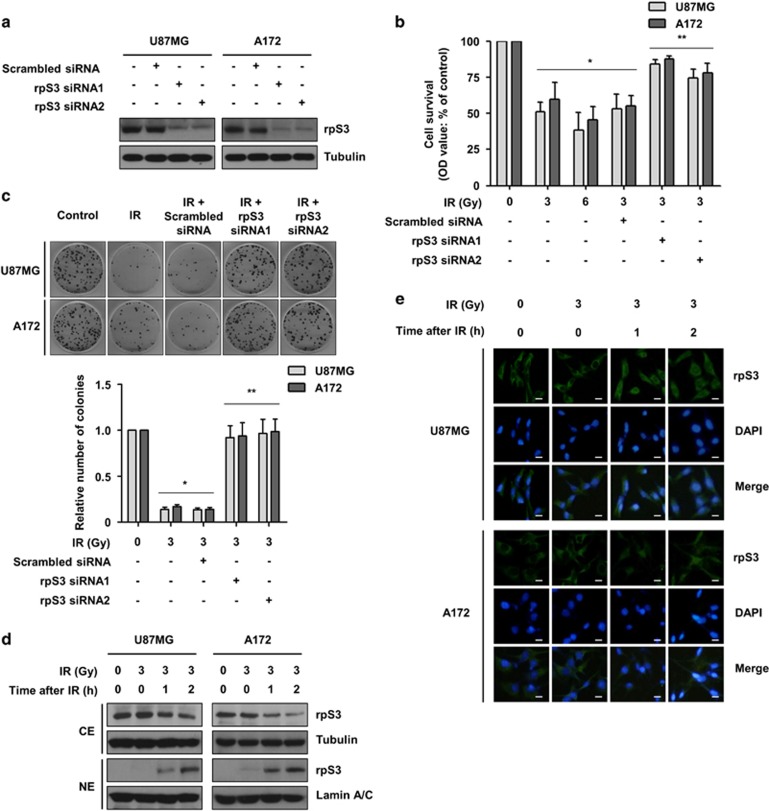Figure 1.
Knockdown of rpS3 enhances the resistance of GBM cells to irradiation. (a) SiRNA knockdown efficiency of rpS3 in U87MG and A172 cells was analyzed by western blotting. (b) Short-term effects of rpS3 knockdown on cell growth in both U87MG and A172 cells following irradiation (IR) were assessed via MTT assay. The data are represented as the mean±s.e.m. (n=3); *P<0.05 compared with non-irradiated cells, **P<0.05 compared with cells treated with irradiation-alone or cells treated with irradiation and scrambled siRNA. (c) Long-term effects of rpS3 knockdown on cell growth in both U87MG and A172 cells following radiation exposure were assessed via colony forming assay. The data are represented as the mean±s.e.m. (n=3); *P<0.05 compared with non-irradiated cells, **P<0.05 compared with cells treated with irradiation-alone or cells treated with irradiation and scrambled siRNA. (d) Radiation-induced translocation of rpS3 from the cytoplasm to the nucleus was assessed by western blotting after cytoplasmic or nuclear fractionation (CE, cytoplasmic extract; NE, nuclear extract). Tubulin and Lamin A/C were used as markers for the CE and NE, respectively. (e) Radiation-induced translocation of rpS3 from the cytoplasm to the nucleus was assessed by IF staining. Scale bars, 25 μm.

